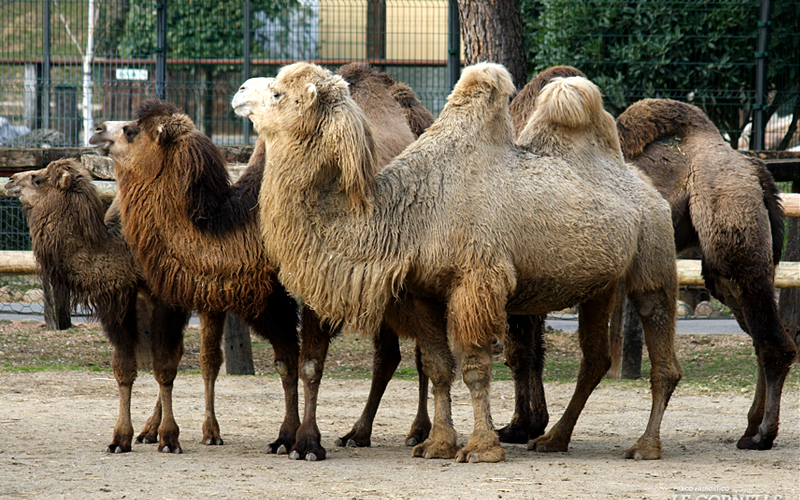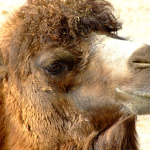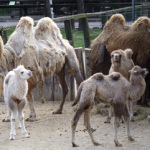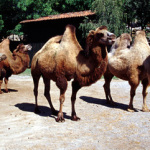-
Common name:
CAMELScientific name:
Camelus bactrianusClass:
MammalsOrder:
ArtiodattiliFamily:
CamelidiProvenance:
Central Western AsiaDiet:
herbs – leavesHabitat:
DesertsReproduction:
12 month, 1 puppy for childbirth -
The camel inhabits desert, semidesert and steppe regions both on the plains and in the mountains. They usually live in herds of twenty or so individuals with a male leader.
The wild camel is taller and more slender than the domestic one which has more compact and taller humps. The camel’s two humps distinguish it from the dromedary which has only one hump. The humps are made of fat that serves as a food reserve. The camel can store a large amount of water in its stomach.
Thanks to its ability to go without food or water for long periods of time, the camel has been used since ancient times by caravans in the crossing of the huge deserts. Also its meat, wool, skin and milk are used. It has a gestation of around 400 days and gives birth to one calf at a time.
-
Camelus ferus
-
Camelus ferus
-
Camelus ferus


















